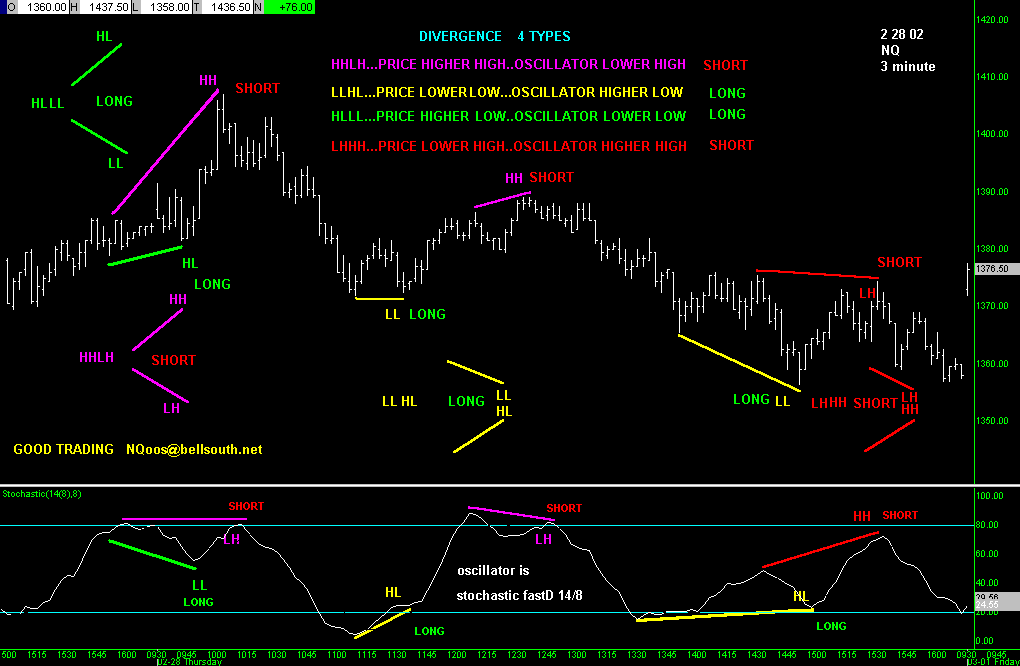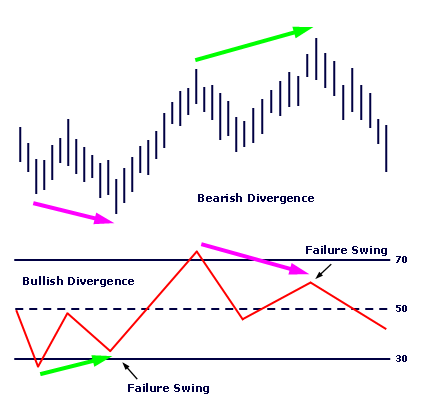Divergence Trading Strategy
Post on: 8 Август, 2015 No Comment

Traders and analysts of the financial instruments, apart from the fundamentals, use a number of indicators to figure out what might happen next to the price of a certain instrument. These indicators offer a simple method of recognizing patterns and predicting which way the price will trend next. The use of these indicators is what makes Forex signals possible as they allow for a real-time analysis of the price action and our analysts here at FXML use them all the time.
One of these indicators is called divergence. Divergence is a leading indicator used by our analysts at FXML and helps to significantly increase profits. The likelihood of entering in the right direction at the right time increases if used alongside other indicators such as Moving Averages (MA), RSI, Stochastichs, Support and Resistance levels etc.
Just by acknowledging the name of the indicator you can easily tell that divergence trading is a type of trading disharmony or deviation. The actual price and the indicators are supposed to go in the same direction and at equal rates. If the price reaches a higher high then the indicator is supposed to reach a higher high and if the price reaches a lower high then the indicator is supposed to follow suit as well. The same goes for lower lows and higher lows. If the price and the indicators don’t correlate then you can tell that some kind of change is about to take place. In short, so far we’ve seen that divergence is calculated between highs and lows of the price and the indicators. The best indicators for trading divergence are RSI, Stochastichs, MACD and Volumes.
Divergence is bullish when the change of the indicator is more positive than the change of the price, and bearish divergence is the other way around.
There are four types of divergences; ‘Regular Bullish Divergence’, ‘Hidden Bullish Divergence’, ‘Regular Bearish Divergence’ and ‘Hidden Bearish Divergence’. We will explain each type below and how to trade each one of them.
Regular Bullish Divergence
Regular divergences are used as a tool to indicate reversals. This EUR/USD 1 hour chart shows the price making a lower low during a two day period. But the momentum in MACD and Stochastics didn’t correspond to that of the price action, making higher lows. This signals a possible reversal of the trend or at least a retrace of the downtrend. Adding to this is the fact that the price was at 1.35, a big round number which has acted as support and resistance before. A long near that level would give a good risk/return ratio.
Regular Bullish Divergence price is making lower lows while indicators are making higher lows. This indicates a coming reversal or retrace.
Regular Bearish Divergence
As we can see from the 4 hour chart below, the price has made a high during the previous week and then made a higher high the next week. On the other hand, all three indicators at the bottom of the chart are making lower highs. This is called ‘Regular Bearish Divergence’ and indicates a fall in the price to come. In this case, since we are in an uptrend we should expect a retrace. After entering at the top, we should look to get out of the trade at the uptrend line.
Regular Bearish Divergence price is making higher highs while indicators are making lower highs.
Hidden Bullish Divergence
Unlike regular divergence, hidden divergence indicates a continuation of the trend. This GBP/USD hourly chart shows two occasions where the price was higher or the same as previously, while the Stochastics and Volume have made lower lows. This divergence indicates that the retrace might be over and trend continuation is about to resume.
Hidden Bullish Divergence unlike regular divergence, hidden divergence indicates the continuation of the trend.

Hidden Bearish Divergence
The 4 hour USD/CHF chart below gives two clear examples of hidden divergence and trend continuation. We can see that when Stochastics were nearing overbought levels and after forming divergence with the price, the pair fell immediately to continue the downtrend. This was aided by the moving averages, 100 simple on the first occasion and the 50 simple on the second.
Hidden Bearish Divergence when Stochastics are nearing overbought levels the pair falls immediately to continue the downtrend.
One thing to keep in mind
Divergence is quite easy to spot, we only have to draw a couple of lines. But sometimes we look too hard at the charts. This makes us see things that aren’t really there. During consolidation or low liquidity, some small divergences between price and indicators might form, but that doesn’t mean we should consider them as real divergences. The chart below shows a four day consolidation period with indicators and price not correlating exactly, but shouldn’t be considered as divergence.
In consolidation periods not everything that looks like divergence is actually divergence so be careful.
Divergence is one of the best ways to use indicators to analyze charts. Alongside other Forex trading strategies. divergence trading can be used to give your chart analysis and trading skills the push they need to make you a very profitable trader. If you want to get a feel of how divergence trading is used in real trading situations to make trading decisions in real time take a look at our weekly Forex analyses, where our top Forex experts explain how they use divergence trading, alongside many other Forex trading strategies to analyze the market’s actions day by day.














